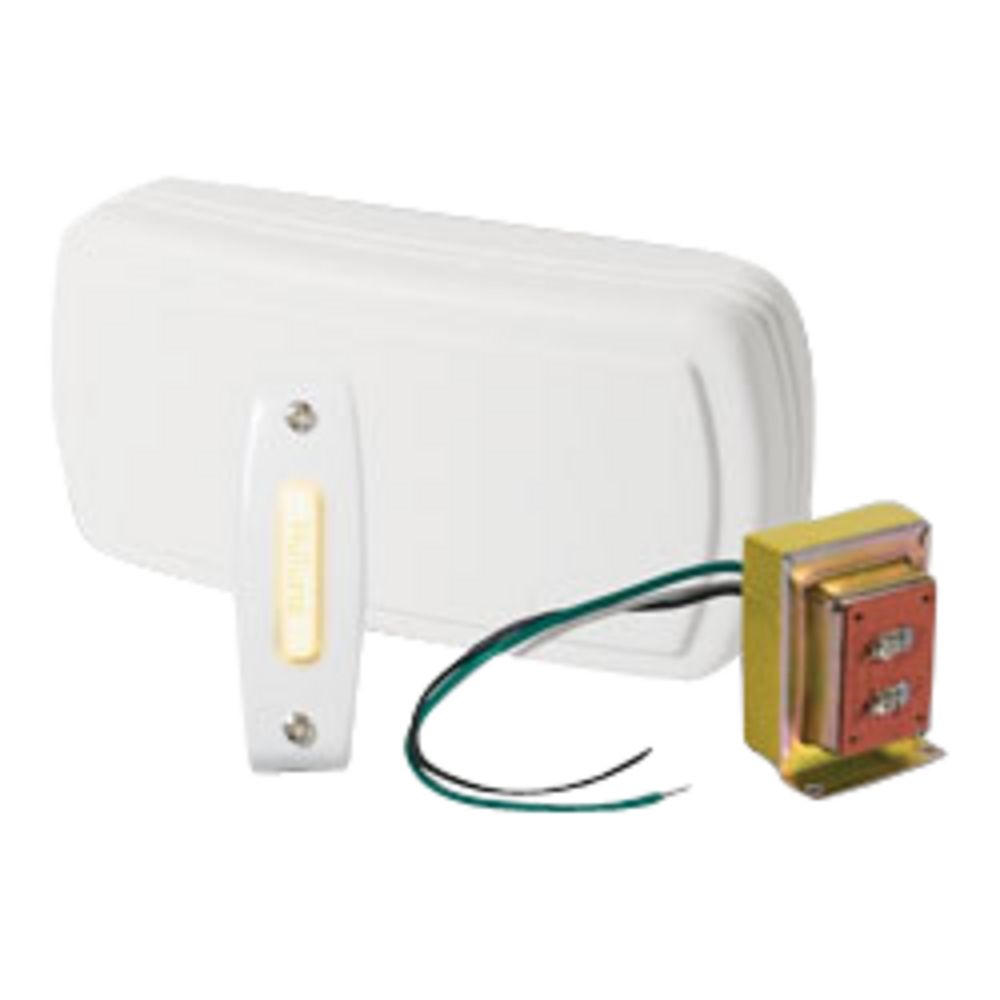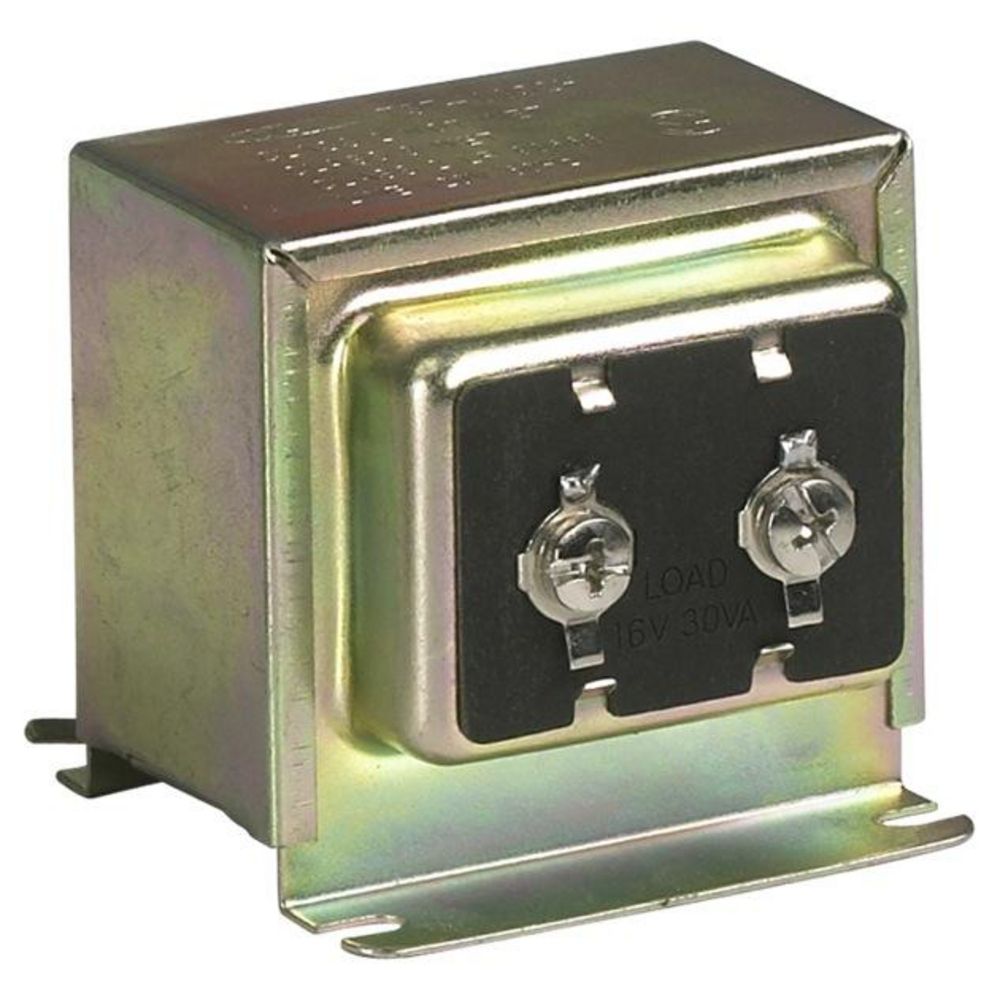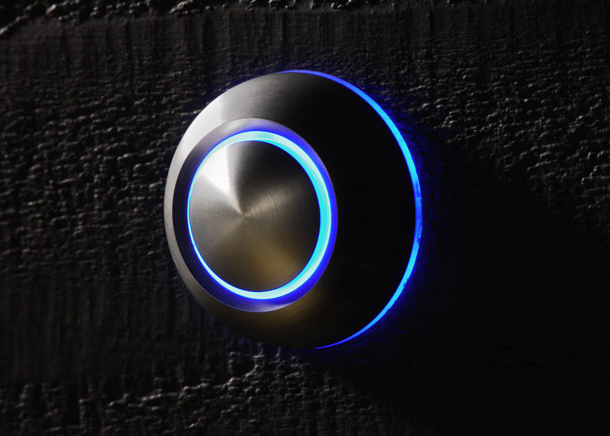How to install a doorbell button
Ring Guests In
Parts and Placement
Doorbells are relatively simple devices, but they do have several parts. The most visible component is the button mounted next to your front door. They come in many finishes and styles, and illuminated buttons make it easy to find them after dark. When pressed, doorbell buttons create an electrical signal that activates the doorbell chime, the component that generates the sound you hear. Basic chimes play a fixed series of sounds, while more advanced devices let you choose one of many audio cues. Doorbells designed for multiple entries can play different sounds depending on which button was pressed so you know which door to answer. Some chimes also light up to provide a visual signal in addition to an audio tone.
The last component of a doorbell system is the transformer. It performs the essential function of converting 120-volt line power to the low-voltage current used by most doorbells.
Which Doorbell Design?
 There are several types of doorbells, and low-voltage systems are the most common. They use 12- to 16-volt power and can be installed by DIY homeowners. Line-power doorbells use 120-volt current and may need professional installation. Wireless doorbell designs use a radio signal to activate the chime. They require no transformer and are either battery powered or have a standard AC power plug.
There are several types of doorbells, and low-voltage systems are the most common. They use 12- to 16-volt power and can be installed by DIY homeowners. Line-power doorbells use 120-volt current and may need professional installation. Wireless doorbell designs use a radio signal to activate the chime. They require no transformer and are either battery powered or have a standard AC power plug.
The Installation
Before you Start
The steps outlined here describe how to install a doorbell system with low-voltage power for a single door. While projects involving low-voltage circuits usually don’t require a permit or electrical inspection, check local building codes before you begin. If you’re replacing an existing doorbell, you may be able to use the existing 120-volt power source and transformer mount for your new installation. If there’s no circuit present, have a licensed electrician install one, along with a mount for your new system’s transformer. You’ll also want to gather some tools before you begin:
- Voltage tester
- Flashlight
- Phillips and flat screwdrivers
- Wire cutters/strippers
- Wire nuts
- Ladder
- Drill and assorted bits
- Stud finder
- Fish tape and string
- Hammer or staple gun and electrical staples
- Masking tape and a pen
Depending on your home’s age and construction, your doorbell’s design and the location of your transformer and chime, you may need additional woodworking tools to create a path for wiring.
Safety First
As with any electrical project, shut off the electricity before you start. At your home’s main electrical box, locate the breaker that controls power to the doorbell circuit and turn it OFF. You may also want to post a note and use tape to create a barrier, so no one turns the power back on while you work. Use a voltage tester at the junction box providing power to your new doorbell to ensure there’s no current present.
Prep Your Work Area
Once the electricity is off, you can remove any old doorbell components. If the existing wire is still good, label all connections with your masking tape and pen. If you’re replacing the wiring too, leave it in place for now, since you may be able to use existing wires to pull new connections through the wall.
Starting at the transformer, remove the wire nuts on the 120-volt connection, unscrew the low-voltage terminals and detach all wires. Unscrew the transformer from the base and remove it. Move to the chime and disconnect the low-voltage wires, labeling them if needed. Remove the chime from its mounts. Finally, unscrew the doorbell and disconnect the wires there.
Lay Out the Wire
For this type of doorbell, you’ll use low-voltage wire, also known as bell wire, to connect all three components. Because many kits come with two-conductor wire, it’s often easiest to pull a single pair of wires from the transformer to chime and then to the doorbell button, but the best layout for your home will depend on the arrangement you choose. You’ll need to make three separate connections:
- The transformer to the doorbell button
- The transformer to the chime
- The chime to the doorbell button
Plan a route for your wire that minimizes the cuts and holes you have to make to simplify the process. If you’re replacing an existing installation, be sure you remove old material to avoid confusion when it’s time to make connections. You’ll probably need to lay wiring both vertically through the wall and horizontally in an attic or basement.
Run horizontal wire along the sides of ceiling or floor joists where possible, securing it every four feet using electrical staples and a hammer or staple gun. If you must cross joists, drill small holes at each crossing to avoid running wire across the tops of boards where it may be damaged.
Running wire up or down walls usually requires drilling a hole through the wall’s top or sole plate and then using fish tape to pull the wire where it’s needed. You may need to drill additional holes through studs or cut channels in your door’s framing to connect your unique doorbell button.
A Pro Angling Tip
The obvious way to pull wire is to insert your fish tape at the button or chime opening and use it to pull the wire to the connection, but there’s an alternative method that may be easier.
Start at the wire end and feed your fish tape toward the component opening. Once it’s there, tie a string to the end and pull it back. Tie the string and wire together and pull both through to the final location.
Making the Connections
Once all wiring is in place, it’s time to complete your doorbell design by connecting the components. Start at the button and strip the ends of the two wires with your wire strippers. Fasten one to each terminal on the back of the button and tighten the screws to create a tight connection. In this case, it doesn’t matter which terminal you use for which wire. Tuck the remaining wire into the wall behind the button mount and install it according to the manufacturer’s directions.
Once the button is in place, move to the doorbell chime. Using the same procedure, make the two connections here. In this case, the order does matter. Connect the transformer wire to the terminal labeled “common” or “transformer” and the wire from the button to the terminal labeled “front” or “button”. Consult your user’s guide if the terminals have different labels. Once the connections are complete, mount the chime in the location you’ve chosen according to the manufacturer’s directions.
 Make the last connections at the transformer. Before you begin, you may want to double-check the breaker to ensure it’s OFF. Identify the low-voltage connectors; they should be screw terminals similar to those found on the other components. Connect the low-voltage wires from the chime and button to the transformer terminals. Just like the button, the order doesn’t matter here either.
Make the last connections at the transformer. Before you begin, you may want to double-check the breaker to ensure it’s OFF. Identify the low-voltage connectors; they should be screw terminals similar to those found on the other components. Connect the low-voltage wires from the chime and button to the transformer terminals. Just like the button, the order doesn’t matter here either.
Finally, connect the 120-volt side of the transformer. Both main power and the transformer should have black and white wires. They may also have a green or bare ground wire. If your main power looks different, stop and consult a professional electrician. You’ll be connecting white to white, black to black and green/copper to green/copper. Strip the ends of each wire, twist them together and secure them with wire nuts. If your doorbell transformer has a ground wire but there’s no matching connection on the main power side, look for a green screw in the junction box and secure the ground wire there. Once you’ve finished the transformer connections, install it on its mount, tuck the wiring inside the junction box and close the lid. It’s time to test your new doorbell.
Cut Yourself Some Slack
When pulling low-voltage wire, it’s a good idea to leave a little extra material to simplify connections. A loop of wire tucked into the wall behind the fixture also saves a lot of work if you have to replace a component at a later date.
Finalizing Installation
Before you turn on the power, review all three components and make sure they’re secure and connected correctly. Once you’re satisfied, turn power ON at the breaker and test the system by pressing the button. You may also want to check to your user’s guide to see if your chime offers any unique doorbell sounds and make any setting adjustments necessary.
Doorbells can add value to your home and inform you when guests arrive or the kids are home from school. Installing your own system is a fun project for any DIY enthusiast. Put your newfound knowledge of how to install a doorbell to good use and greet visitors with a custom ringtone.
*Legal Notice: Destination Lighting content is for information only. It is strongly recommended that you consult a professional before attempting any lighting or wiring projects. The company is not liable for misuse of its content.

